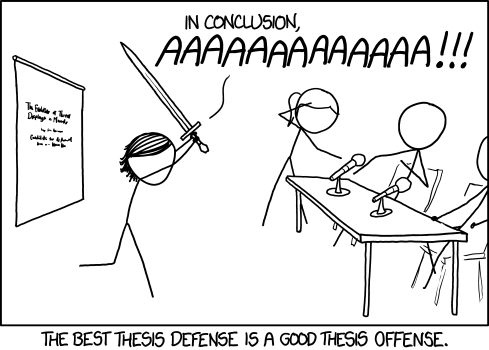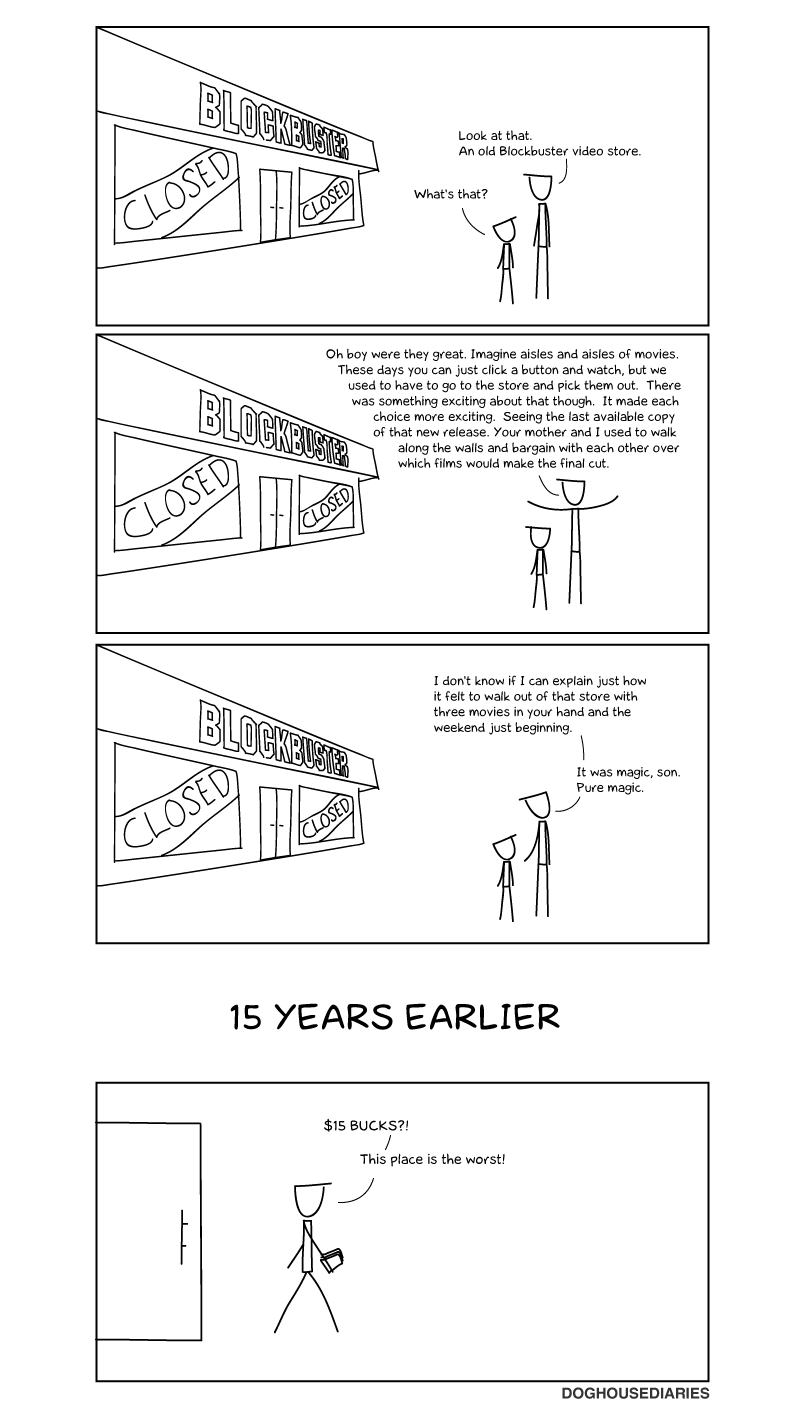 The first nick came with what Blanche thought was a sincere apology. She was amenable to accepting it because she was enjoying the view: him kneeling between her spread legs, with nothing on but a pair of underwear. It mitigated her discomfort at being so exposed and the ache where the rim of the bathtub bit into her buttocks. Her ass was, apparently, not as fat as she feared.
The first nick came with what Blanche thought was a sincere apology. She was amenable to accepting it because she was enjoying the view: him kneeling between her spread legs, with nothing on but a pair of underwear. It mitigated her discomfort at being so exposed and the ache where the rim of the bathtub bit into her buttocks. Her ass was, apparently, not as fat as she feared.
The careful attention he was paying to the task of shaving her pussy was also a salve to her bruised pride.
“Don’t you like my pubic hair?” she had asked, after his suggestion that she shave it off.
She was ready to be wounded in that very female way a woman can be. Over a careless remark about some minor aspect of the area between her thighs. As if that nether valley were a permanent wound forever waiting to split open and bleed at even the mildest criticism. All it took was one tiny gesture of disregard, one misinflected word.
“Some days I like it,” he said. “But not today. Haven’t you ever wondered what it feels like bare?”
Blanche pondered that, reaching back into the pre-pubescent past. She had childhood memories, of course, but none of them involved her sexual organs.
Perhaps one. An abstract tangle of images and feelings, of sliding herself instinctually but shamefully over an old piece of carved furniture, feeling the ridges and even the grain of the wood against her bare, plump cunt. As much as her rational mind told her that all children are sensual creatures, she recoiled in unforgiving disgust at the memory.
“Ow! Careful!” she snapped. She flinched at the second nick, unsure of whether the flare of her temper came from the cut or at the queasy shame of her remembered self.
“Sorry, sorry,” he muttered, thumbing the welling bead of blood away, along with a smear of pinkening shaving foam and a clump of dark curls like a small, broken spider dragging its fractured legs behind it.
The tendons of her inner thighs ached for being so widely spread, and now, for the tension of fear that tightened them further. The muscles twitched and trembled.
He looked up from his labours, straight razor in one hand, towel thrown over his shoulder. “Don’t you trust me?”
Blanche tried to relax. “Yes?” she said, with a rising tone that meant no.
Trust? Trust, with his face so close to her viscera? Not in bed, like a lover with a clever tongue and lascivious intentions, but like a judge of aesthetics, efficient and clinical and far too close. Didn’t one need a degree or a license to be there, like that?
Most women were accustomed to seeing blood in the region but this was something else. He shaved himself with a straight razor each morning; it wasn’t that he lacked experience with its use. But a vulva, she thought, was a different matter: squidgier, with fewer flat planes, more complex even than the little ridged dip between his nose and his upper lip, or the bony part of his chin. She wondered how many cunts he’d shaved and decided she didn’t want to know the answer.
Holding the flesh of her left labia taut between his thumb and index finger, he shaved away another clump of shrubbery, leaving the skin pink and velvety in its wake. Then he nicked her, again, in almost exactly the same spot, except on the opposite side. There, where the skin transforms from dry, pored epidermis into shiny, moist flesh, the absent cusp – the indistinct delineation between outside and insideness.
“Hey! Fuck! Watch it!” She launched each syllable onto a higher shelf.
“Jesus, sorry.”
“You’re not sorry!”
“Don’t be silly,” he said, pinching the cut to stop the bleeding. The gesture distorted her labia, pulled it sideways until it looked detachable – an alien appendage.
In fact, her whole denuded crotch looked unfamiliar. The pinch hurt more than the cut. She looked up from her groin to his face.
“Ow,” she breathed.
He met her gaze and smiled. “Ow,” he whispered back.
* * *
“So, what do you think?”
He released the plump lip, leaving a curiously white mark in the flesh where the pressure had constricted the blood vessels.
Blanche looked down again, doubtfully. “It stings.”
“Touch it. Feel it.”
“Of all the ways of getting me to wank in front of you, this is the lamest.”
“Have I ever had to trick you into doing that?” He nodded at her crotch. “Come on, feel it.”
She reached down, tentatively, the way one hesitates to touch an unfamiliar thing.
“Oh.”
He smiled and cocked an eyebrow. “Smooth, huh?”
Blanche didn’t answer. She was too busy marveling at how any part of her own body could feel so foreign to her, and so unaccountably perverse.
He rose on his knees, wrapped an arm around her waist, and kissed her.
* * *
It was in the midst of that kiss – once it had turned from casual affection to something more intentional and driven, once she had put aside any unwillingness to indulge in the strange delight of stroking her own denuded cunt – that she felt the first tiny pricks of pain. At first it was just a clutch of itches, but as she grew wet and her wetness spread out over the area, the itch became a maddening sting. She squirmed in his embrace, then struggled, and then pulled her hand from between their bodies in alarm.
“It stings! It fucking burns!”
He smiled against her mouth.
“I need to rinse it. Move,” she said, trying to push him away.
But instead of acquiescing, he cupped her bare ass cheeks in his hands and pulled her against him, burying his face into the curve of her neck. She could feel the cotton of his underwear against her mound, not soft at all, but coarse and mean, and his cock, thickening by degrees beneath it.
In that one quotidian moment, he had pushed her past being a sentient human who took care of her own requirements with any semblance of dignity. The scratch of the cotton felt good; his erection was in just the right place so that, if she moved her hips strategically, she could relieve herself of the infuriating sting and grind herself to orgasm at the same time.
* * *
Just before she reached it, he stopped her and picked her up off the edge of the tub, her legs still wrapped around his hips.
“What? What are you doing?” she demanded.
“Don’t you want to fuck?”
“I do. We could have done it right there.”
“True, but this is better,” he said, and dropped her onto the unmade bed.
She looked up at him, with the veiled sullenness of someone who’s just been cheated of something. It wouldn’t be the first time. He had a nasty habit of teasing her to the point where she got aggressive and then would, either figuratively or literally, walk off whistling. But she sensed he was not in that kind of a mood today. There was a dark wet spot and faint red streaks on his underwear where she’d rubbed herself against him. He was still hard. She elbowed her way up the bed to make room for him as he peeled them off.
“Does it still sting?” He pushed her legs apart, knelt between them and cupped her cunt. The salt from his palm made nonsense of the question. Then he gave her a savage squeeze.
Her hips arched upward, of their own volition. “Motherfucker!”
“Bitch.” His hand was hot and cruel; he almost made a fist, gripping the pink flesh of her.
Caught between arousal and horror, she felt the recently clotted cuts break open, watched a tiny rivulet of blood seeped between his fingers. “I don’t want to. I’ve…I’ve changed my mind.”
“Yes, you do,” he said, taking his hand away, gabbing her by the back of the thighs and pulling her to up to him. “Don’t go all coy on me.”
“I’m bleeding. Can’t you see I’m bleeding?”
“Yeah, you are.” He brushed the back of his fingers over her cunt, smearing the blood that wept from the cuts, then pressed his thumb between the lips and trailed the flat of it over her clit. “And you still want to fuck.”
Blanche turned her head away, wondering why her eyes were filling with tears, why the blood scared her, and why, despite it or because of it, she wanted to fuck.
As he pushed into her, it wasn’t the thrust that hurt. It was the way filling her pulled the cuts apart. It wasn’t a sting any more; now it was worse. As if all the little nicks had decided to merge and become one generalized ache.
“Look,” he said. And, when she wouldn’t turn back, he bent forward, cradling her head in his hand and made her look.
Between their bodies, across the expanse of bare skin, between her raised knees, he penetrated her. Even and unhurried, he fed himself into the mess of her new cunt, marred, swollen, seeping, streaking his cock with blood each time he pulled out of her.
It didn’t stop. The more aroused she became, the more she bled and the less she cared – or part of her, anyway – because she was crying. She knew she was crying. She heard her own breath, hitching on the sobs that couldn’t quite decide if they were moans or something else.
She wanted to see his face, to get some sense of what was going through his mind, but she couldn’t tear her eyes from the frightening spectacle of copulation turned into artful butchery, and her own body and his made into meat, into their constituent parts. Just blood and skin and sweat and meat.
Then she knew why it frightened her, as he repeatedly pushed the trickles of red back into her body: all the risk it carried; all the untouchability of it; all the mad commitment of covering himself in her blood; all the agonizing desire that anathema could offer.
“Oh, Christ,” she whispered.
The shock of the orgasm took her like a thief, as if it didn’t belong to her, as if she’d had her body snatched and put to a purpose she hadn’t agreed to. Before she’d stopped twitching, he covered her with his body, dispensing with all his earlier restraint, and fucked her with all the driven ruthlessness of a man who has been somewhere wicked and wants to forget it. He stopped after one last, harsh thrust, rested his forehead on her collarbone, and came, shuddering.
It was hard to know how long they lay like that – long enough that, when he moved off her, the gore had clotted. She hissed as he pulled away from her skin. He gave an uncertain little laugh as if, perhaps, this time he’d gone too far.
It wasn’t a desire to assuage his doubts that made her roll onto her side, nestle up against him and fall asleep. It was the need of an animal for shelter after a storm, and the deep, dreamless sleep of a creature that has come to know what it’s made of.



























 Some readers may feel the impulse to say: “But hip hop artists are poets!” Caplan understands the complexity of such an assertion and addresses it. He reminds us that the term “poetry” does not maintain a stable definition; therefore, to insist something is poetry is to begin a new debate about poetry is. More importantly, he hones in on the real impetus behind the desire to call Bob Dylan or Kanye West poets, which is the issue of cultural prestige. Despite the fact that poetry maintains a marginal readership, people do value it. Poetry, unlike many other forms of entertainment, helps to give life meaning instead of advertising meaning. The desire to call hip hop poetry is essentially a desire to elevate its status. But as Caplan concludes, “Hip hop, however, contributes most to the fields of poetry and poetics once we acknowledge that it differs significantly from the most prestigious forms of contemporary poetry.” What print-based poetry has largely discarded, hip-hop artists have salvaged, reminding us how artistic innovation occurs: a wonderful combination of reclamation and innovation.
Some readers may feel the impulse to say: “But hip hop artists are poets!” Caplan understands the complexity of such an assertion and addresses it. He reminds us that the term “poetry” does not maintain a stable definition; therefore, to insist something is poetry is to begin a new debate about poetry is. More importantly, he hones in on the real impetus behind the desire to call Bob Dylan or Kanye West poets, which is the issue of cultural prestige. Despite the fact that poetry maintains a marginal readership, people do value it. Poetry, unlike many other forms of entertainment, helps to give life meaning instead of advertising meaning. The desire to call hip hop poetry is essentially a desire to elevate its status. But as Caplan concludes, “Hip hop, however, contributes most to the fields of poetry and poetics once we acknowledge that it differs significantly from the most prestigious forms of contemporary poetry.” What print-based poetry has largely discarded, hip-hop artists have salvaged, reminding us how artistic innovation occurs: a wonderful combination of reclamation and innovation. 



